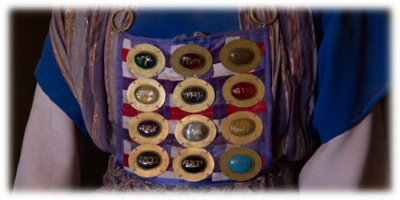And thou shalt set in it settings of stones, even four rows of stones: the first row shall be a sardius, a topaz, and a carbuncle: this shall be the first row. And the second row shall be an emerald, a sapphire, and a diamond. And the third row a ligure, an agate, and an amethyst. And the fourth row a beryl, and an onyx, and a jasper: they shall be set in gold in their inclosings. And the stones shall be with the names of the children of Israel, twelve, according to their names, like the engravings of a signet; every one with his name shall they be according to the twelve tribes. (Exodus 28:17-21, KJV)
Each translation uses different words for the stones of the Ephod. Does the Hebrew and Greek texts offer any help in identifying the actual identity of these stones?
First Row
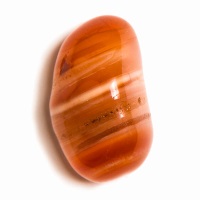 |
|
Hebrew: אודם (odem) Strong's #124 Meaning: Red Possible Stone: Carnelian Other Possibilities: Jasper |
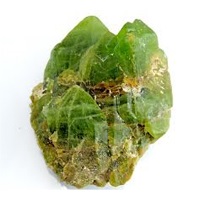 |
|
Hebrew: פטדה (pit'dah) Strong's #6357 Meaning: (unknown) Possible Stone: Olivine Other Possibilities: Chrysolite, Topaz (The Septuagint uses the word topazios, but the Topaz was unknown at the time of the Exodus) |
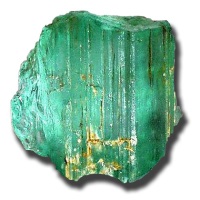 |
|
Hebrew: ברקת (bareqet) Strong's #1304 Meaning: Lightning/Flash Possible Stone: Emerald Other Possibilities: Beryl or Quartz (the Septuagint uses Smaragdos meaning a green stone) |
Second Row
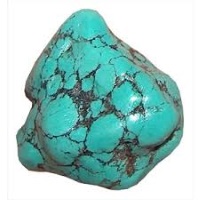 |
|
Hebrew: נופך (nophekh) Strong's #5306 Meaning: (unknown) Possible Stone: Turquoise (this stone was commonly mined in the Near East) Other Possibilities: Carbuncle, Garnet, Emerald and Malachite (the Septuagint has Anthrax meaning coal) |
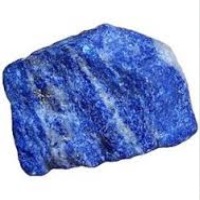 |
|
Hebrew: ספיר (saphiyr) Strong's #5601 Meaning: Scroll/Write Possible Stone: Lapis Lazuli Other Possibilities: Sapphire (While the Hebrew word is saphiyr, the origin of the word Sapphire, the Sapphire was unknown until the Roman period.) |
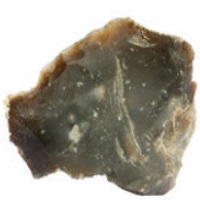 |
|
Hebrew: יהלום (yah'lom) Strong's #3095 Meaning: Hammer/Strike Possible Stone: Flint (A stone used to create a spark when struck) Other Possibilities: Onyx, Diamond |
Third Row
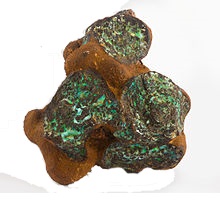 |
|
Hebrew: לשם (leshem) Strong's #3958 Meaning: (unknown) Possible Stone: Opal Other Possibilities: Amber, Jacinth, Agate, Amethyst |
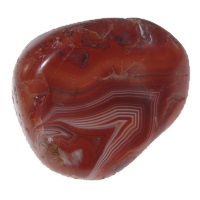 |
|
Hebrew: שבו (sh'vo) Strong's #7618 Meaning: (unknown) Possible Stone: Agate (The Septuagint uses achates meaning Agate.) Other Possibilities: (unknown) |
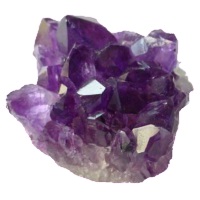 |
|
Hebrew:אחלמה (ahh'lamah) Strong's #306 Meaning: Dream Possible Stone: Amethyst (The Septuagint uses Amethystos) Other Possibilities: (unknown) |
Fourth Row
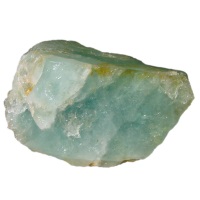 |
|
Hebrew: תרשיש (tarshish) Strong's #8658 Meaning: (unknown) Possible Stone: Topaz Other Possibilities: Beryl, Lapis Lazuli, Amber, Jasper, Serpentine, Olivine, Flint |
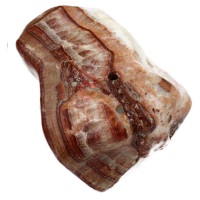 |
|
Hebrew: שוהם (shoham) Strong's #7718 Meaning: (unknown) Possible Stone: Onyx Other Possibilities: Beryl (The Septuagint uses beryllios), Malachite |
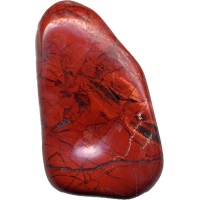 |
|
Hebrew: ישפה (yash'pheyh) Strong's #3471 Meaning: (unknown) Possible Stone: Jasper (The Septuagint uses laspis meaning Jasper.) Other Possibilities: Ruby, Hyacinth, Emerald |
Like what you’re discovering? Continue the journey from Bible reader to translator.
|



